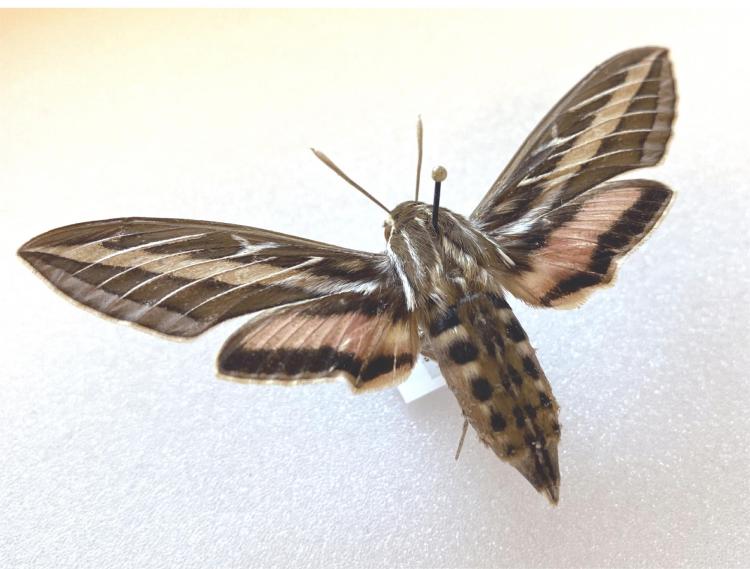The CU Museum is closed until January 8, 2026.
During this time, collection visits will be available by appointment and other special access requests will be considered on a case-by-case basis.
Please email cumuseum@colorado.edu for more information.
White-lined Sphinx
The White-lined Sphinx is an abundant North American pollinating moth found from coast to coast. These insects are closely associated with plants: as adults they drink nectar from flowers and the caterpillars feed on leaves of many different hostplants. A hostplant is where an adult moth or butterfly lays their egg and upon hatching, the caterpillars eat the leaves of this plant until they pupate in the ground.
The White-lined Sphinx will drink the nectar from many types of flowers, and some of these flowers greatly depend on the moths’ visits for

Did you know that the color of columbines can vary from blue (like our state flower!) to white? The color of the petals can serve as a clue for the type of pollinator found in the region. The white-petaled columbines, or Aquilegia caerulea var. ochroleuca, is found commonly at lower elevations in Utah, Idaho, and western Wyoming2, where the White-lined Sphinx is particularly common. In other regions like the Rocky Mountains, the columbine is pale or dark blue and found and higher elevations where it is cooler. These moths are not as common at higher elevations where it is cooler and wetter. As with white columbines, the blue petal gives a hint to possible pollinators. Bumble bees are particularly abundant insects at higher elevations, and frequently pollinate blue and purple flowers. Many white flowers, particularly those with long nectar spurs like the white columbine, are pollinated by moths. Most moths drink nectar from dusk until dawn, and the white coloration is easier to find. The white columbines also have longer spurs, which match the tongue length of White-lined Sphinx.
Scientific name: Hyles lineata (Family: Sphingidae)
Catalog number: UCMC 0041062
Label data: Albuquerque, Bernalillo County, New Mexico; April 22, 1993; Reed A Watkins

